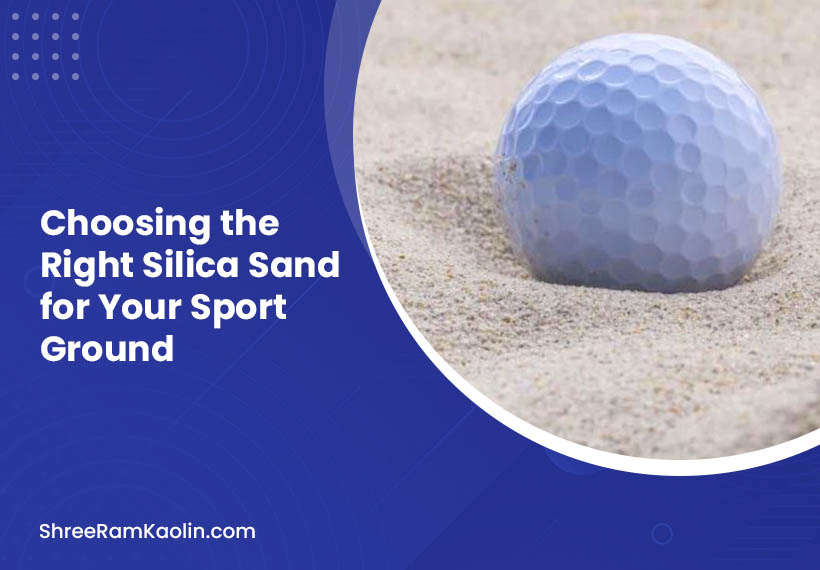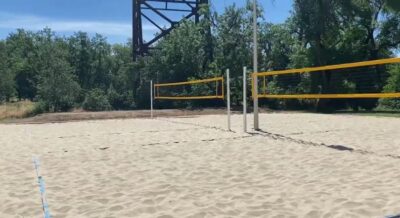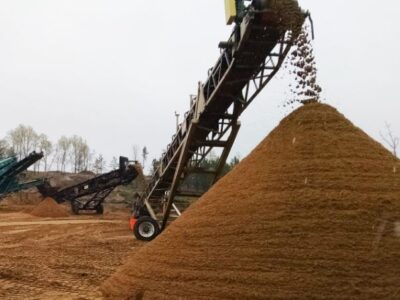Choosing the Right Silica Sand for Your Sport Ground: Key Considerations

Maintaining a high-quality sports ground is vital to providing optimal playing conditions and athlete safety, with one key aspect being selecting an ideal type of silica sand for drainage, soil structure and performance considerations.
Here, we explore key considerations when choosing silica sand as part of your sports ground solution.
What is Silica Sand and its Properties?
Silica sand (commonly referred to as quartz sand) is an inert material composed predominantly of silicon dioxide (SiO2) formed into quartz crystals.
Due to its highly durable nature and lack of chemical reactants, silica sand makes an excellent surface material suitable for various sports grounds applications.
Common Uses in Sports Grounds

Silica sand plays an indispensable part in sports ground construction and maintenance, most frequently used in root zone mixture (the layer where grass roots penetrate to grow).
Furthermore, silica sand serves top dressing purposes in golf courses or bunker construction on sports fields.
Factors to Consider When Choosing Silica Sand
Particle Size and Grading
Particle size and grading of silica sand is of critical importance when creating sports grounds, with each sport having specific particle distribution requirements to ensure optimal drainage, soil structure and playability.
Golf course greens typically need finer sand with smaller particles to facilitate drainage and create an ideal playing surface, while sports fields like football or soccer might benefit from slightly coarser grains for increased soil aeration and root development.
Purity and Chemical Composition
Purity and chemical composition of silica sand is of critical importance in sports grounds environments. High-grade silica should contain 95%+ silica oxide by weight to guarantee good drainage, soil structure and turf health outcomes.
Contaminants like clay silt or organic material could create issues for drainage systems as well as adversely affect drainage system operation and turf health results.
Color and Appearance
Color and appearance may seem like aesthetic concerns for sports grounds; however, their practical value should never be discounted.
Light-colored sands may help increase field visibility for easier player tracking of balls or equipment on the pitch; darker-toned sands may provide greater heat absorption while encouraging stronger grass growth.
Drainage and Permeability
Proper drainage is integral for maintaining high-quality sports grounds, and silica sand plays a critical role in assuring it by increasing water permeability and preventing waterlogging. Particle size, gradation and compaction all play an integral part in contributing to its drainage properties.
Durability and Resistance
Sports grounds can experience heavy foot traffic, equipment use and adverse weather conditions; for this reason the durability and resistance of silica sand are vitally important considerations for long-term sustainability of playing surfaces.
Sand that exhibits resistance against weathering, abrasion and compaction helps preserve playing surface integrity over time.
Types of Silica Sand for Sports Grounds
Root Zone Sand

Root zone sand is typically utilized in the upper layer of soil where grass roots emerge, providing good drainage, air exchange, and root development.
It typically features an even particle distribution to promote optimal drainage..
Top Dressing Sand
Top dressing sand is a fine grade of silica sand used to level and smooth playing surfaces on sports grounds, to maintain consistent levels for optimal playability.
Regular applications ensure optimal playability of this surface.
Bunker Sand
Bunker or trap sand, typically utilized on golf course bunkers, provides excellent drainage while being resistant to erosion and compaction. This coarse-grained material ensures adequate drainage with excellent resistance against compaction or erosion.
Installation and Maintenance Considerations
Proper Installation Techniques
Silica sand installation is essential to ensuring optimal performance and longevity of a sports ground, including factors like proper grading, compaction and integration of other soil components.
Maintenance and Grooming
Regular maintenance and grooming of sports grounds are integral parts of maintaining their quality, including services such as aeration, top dressing and overseeding.
Topdressing and Overseeding
Topdressing involves applying a thin layer of sand or soil mixture onto the playing surface to level it and promote healthy turf growth, while overseeding involves planting new grass seeds to revitalize turf areas that have thin patches or fill in bare spots.
Cost and Sourcing
Cost Factors
Cost estimates for silica sand vary widely depending on its quality, source, transportation distance and quantity required.
Higher-grade varieties with specific particle size distribution and purity levels typically command premium pricing.
Sourcing and Transportation
Sourcing silica sand from local or regional suppliers is often preferable to minimize transportation costs and ensure an uninterrupted supply chain.
However, importing from specialty quarries or suppliers may be necessary to meet specific requirements. If you’re looking for the best silica sand, then Shree Ram Kaolin is the best silica sand exporter for sports grounds, offering high-quality products tailored to your needs.
Local vs. Imported Sand
Local sources may offer more cost-effective sand sources; however, imported material from specialist quarries or suppliers can provide higher quality and consistency based on factors like your sports ground requirements, budget constraints and availability of local sources. The decision will ultimately rest with you!
FAQs
What particle size range should golf course greens possess?
Golf course greens often call for finer sand with particle sizes between 0.25-0.5 mm to facilitate adequate drainage and provide a comfortable playing surface.
Can silica sand be combined with other soil amendments or materials to form soil amendment blends?
Yes, silica sand can be mixed with various soil amendments or materials such as peat moss and calcined clay in order to create an individualized root zone mixture tailored specifically for specific sports ground requirements.
At what frequency should top dressing be applied on sports grounds?
Top dressing frequency will depend upon various factors such as type and use levels for sports fields as well as any maintenance needs, with at least once or twice annually being recommended to maintain an even and level playing surface.
Can silica sand be reused or recycled after its initial use in sports grounds?
Silica sand used on sports grounds may be recycled if it meets quality standards and has been correctly cleaned and processed; however, this option may not always be cost-effective depending on individual circumstances.
How does silica sand’s color influence its performance as sports grounds?
Color can have an immense influence on sports grounds in several ways. Lighter colored silica sands may increase field visibility and enable players to more easily track balls or equipment on the pitch; darker hues absorb and retain heat more effectively while encouraging grass growth; however, color preferences are ultimately determined by aesthetic considerations as well.
Conclusion
Selecting an ideal silica sand for your sports ground is key to creating optimal playing conditions, drainage and turf health. By considering factors like particle size purity chemical composition drainage properties durability you can select an ideally suitable product tailored specifically for you needs and ensure long term performance of your sports turf surface.
Likewise proper installation, maintenance, sourcing strategies all play key roles in guaranteeing long-term performance of any given surface.
Consider investing in quality silica sand and following best practices can significantly boost the quality and lifespan of your sports ground, creating an enjoyable playing experience for athletes as well as spectators alike.

